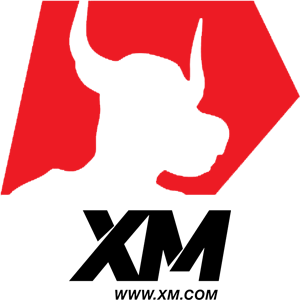Margin and Leverage on XM
Margin and leverage are two of the most essential concepts every trader must understand when trading on platforms like XM. These tools allow traders to control larger positions with a smaller initial investment, which can amplify both potential profits and risks.
At XM, margin and leverage are provided to offer flexibility and enhance trading opportunities across various asset classes. This guide will explain how margin and leverage work on XM, how to manage them effectively, and how they impact your trading strategy.
At XM, margin and leverage are provided to offer flexibility and enhance trading opportunities across various asset classes. This guide will explain how margin and leverage work on XM, how to manage them effectively, and how they impact your trading strategy.

Unique Leverage Up to 888:1

- Flexible leverage between 1:1 – 888:1
- Negative balance protection
- Real-time risk exposure monitoring
- No changes in margin overnight or at weekends
At XM clients have the flexibility to trade by using the same margin requirements and leverage from 1:1 to 888:1.
About Margin
Margin is the amount of collateral to cover any credit risks arising during your trading operations.Margin is expressed as the percentage of position size (e.g. 5% or 1%), and the only real reason for having funds in your trading account is to ensure sufficient margin. On a 1% margin, for instance, a position of $1,000,000 will require a deposit of $10,000.
For Forex, Gold, and Silver, new positions can be opened if the margin requirement for the new positions is equal to or less than the free margin of the account. When hedging, positions can be opened even when the margin level is below 100% because the margin requirement for hedged positions is Zero.
For all other instruments, new positions can be opened if the margin requirement for the new positions is equal to or less than the free margin of the account. When hedging, the margin requirement for the hedged position is equal to 50%. New hedged positions can be opened if the final margin requirements are equal to or less than the total equity of the account.
About Leverage
Using leverage means that you can trade positions larger than the amount of money in your trading account. Leverage amount is expressed as a ratio, for instance, 50:1, 100:1, or 500:1. Assuming that you have $1,000 in your trading account and you trade ticket sizes of 500,000 USD/JPY, your leverage will equate to 500:1.How would it be possible to trade 500 times the amount you have at your disposal? At XM you have a free short-term credit allowance whenever you trade on margin: this enables you to purchase an amount that exceeds your account value. Without this allowance, you would only be able to buy or sell tickets for $1,000 at a time.
XM shall monitor the leverage ratio applied to clients’ accounts at all times and reserves the right to apply changes to and amend the leverage ratio (i.e. decrease the leverage ratio), on its sole discretion and without any notice on a case-by-case basis, and/or on all or any accounts of the client as deemed necessary by XM.
XM Leverage
Depending on the account type you open at XM, you can choose the leverage on a scale from 1:1 to 888:1. Margin requirements do not change during the week, nor do they widen overnight or at weekends. Moreover, at XM you have the option to request either the increase or the decrease of your chosen leverage.
Leverage Risk
On the one hand, by using leverage, even from a relatively small initial investment you can make a considerable profit. On the other hand, your losses can also become drastic if you fail to apply proper risk management.This is why XM provides a leverage range that helps you choose your preferred risk level. At the same time, we do not recommend trading close to leverage of 888:1 due to the high risk it involves.
Margin Monitoring
At XM you can control your real-time risk exposure by monitoring your used and free margin.Used and free margins together make up your equity. Used margin refers to the amount of money you need to deposit to hold the trade (e.g. if you set your account at a leverage of 100:1, the margin that you will need to set aside is 1% of your trade size). Free margin is the amount of money you left in your trading account, and it fluctuates according to your account equity; you can open additional positions with it, or absorb any losses.
Margin Call
Although each client is fully responsible for monitoring their trading account activity, XM follows a margin call policy to guarantee that your maximum possible risk does not exceed your account equity.As soon as your account equity drops below 50% of the margin needed to maintain your open positions, we will attempt to notify you with a margin call warning you that you do not have sufficient equity to support open positions.
Stop-Out Level
The stop-out level refers to the equity level at which your open positions get automatically closed. The stop-out level in a client account is reached when the equity in the trading account is equal or falls below 20% of the required marginConclusion: Master Margin and Leverage for Trading Success on XM
Understanding margin and leverage is fundamental for successful trading on XM. By grasping how these tools work, traders can make informed decisions, manage risks effectively, and optimize their market exposure.
Always remember that while leverage offers opportunities for greater returns, it also magnifies potential losses. Use XM’s educational resources and risk management tools to trade responsibly and enhance your trading journey.


